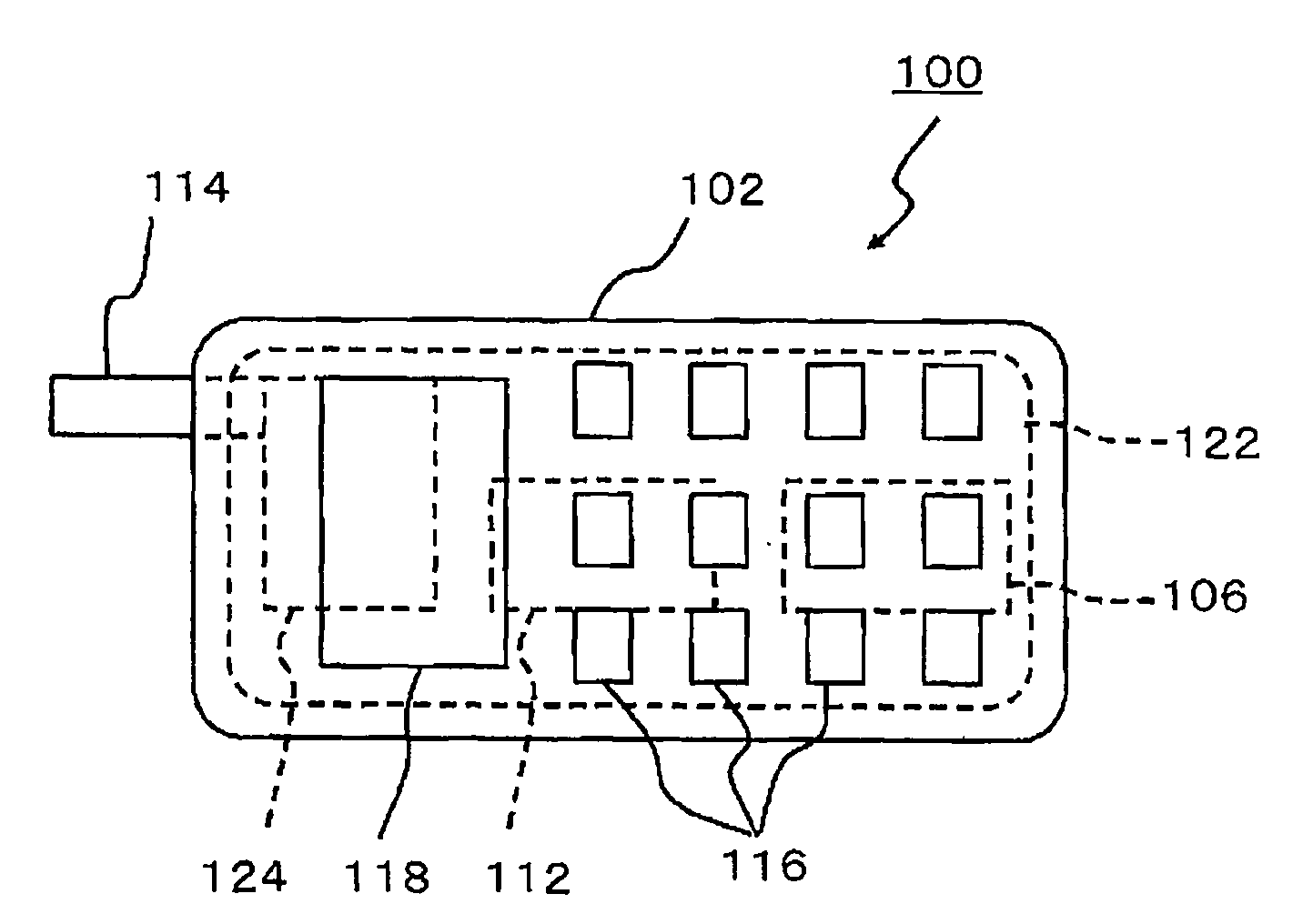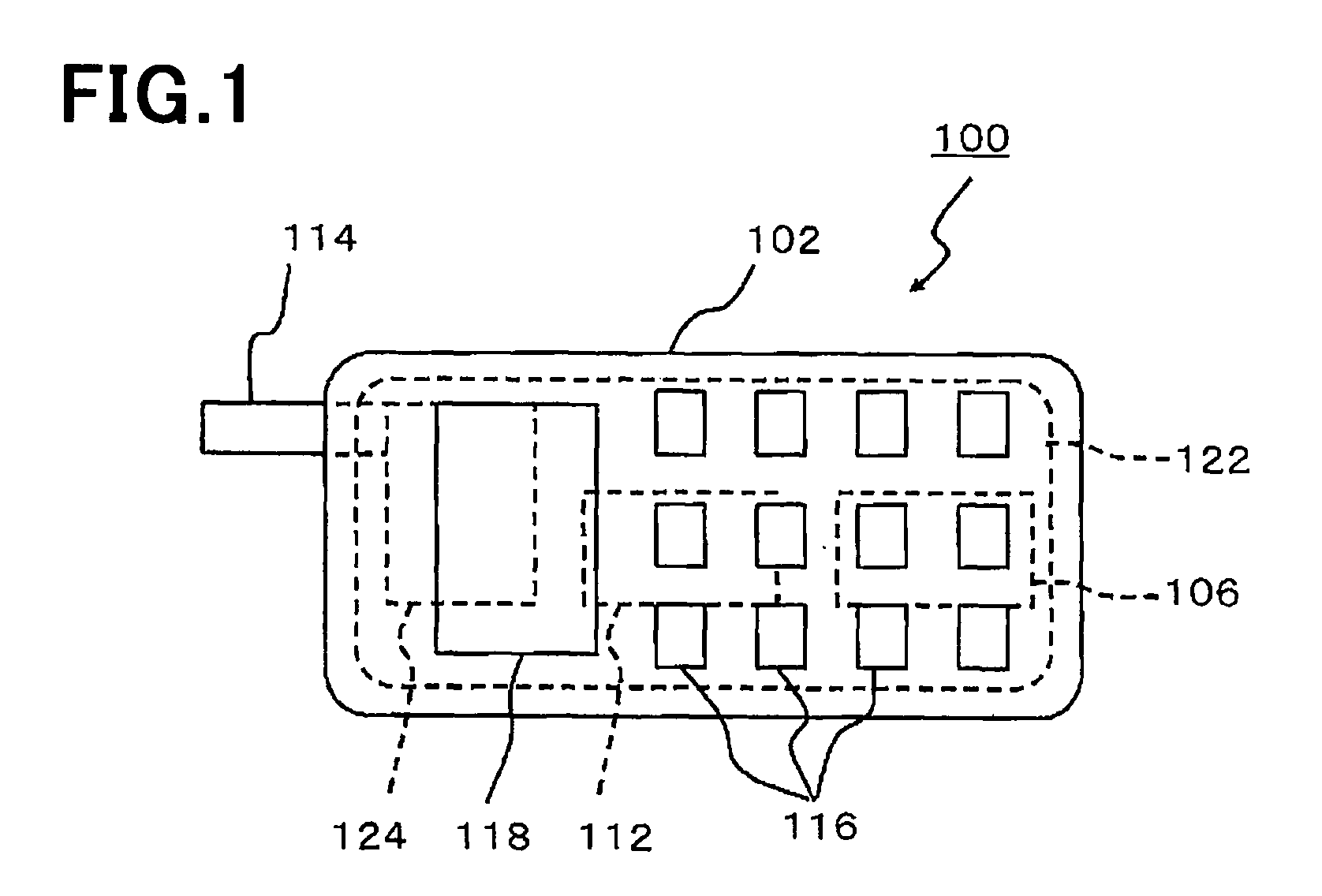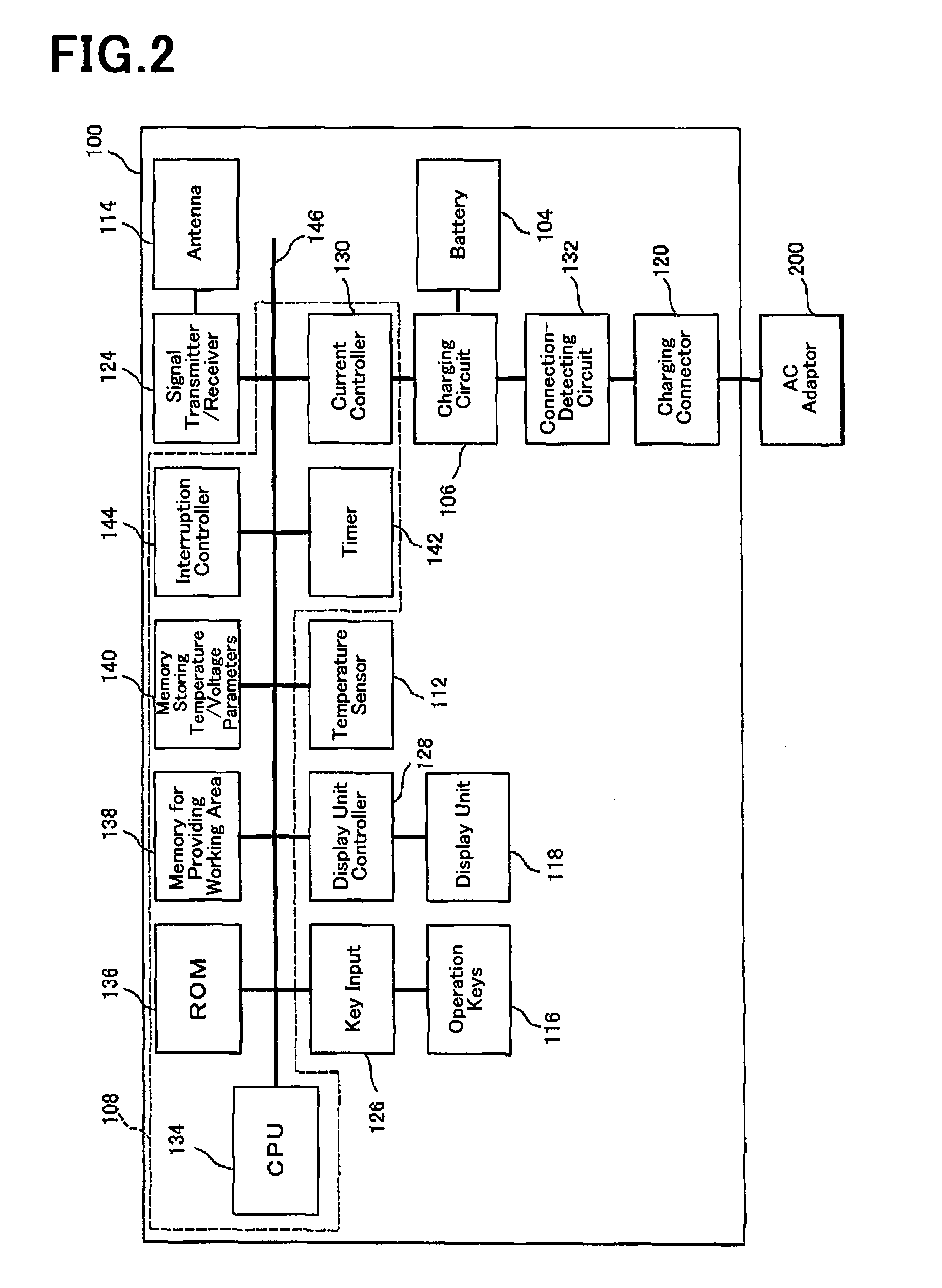[0012]In view of the above-mentioned problems which occur when a conventional mobile terminal is charged, it is an object of the present invention to provide a mobile terminal, a method of charging a battery mounted in a mobile terminal, and a program for executing the method, all of which are capable of shortening a period of time necessary for charging a battery, and preventing a temperature of a mobile terminal from rising.
[0014]In the mobile terminal in accordance with the present invention, since a temperature in the case is detected by the temperature sensor, it is possible to detect a temperature of an entirety of a mobile terminal taking into consideration calorific power produced by electronic parts other than the charging circuit. Furthermore, since the
charge controller controls a current to be supplied to the battery, in accordance with a temperature in the case, a current to be supplied to the battery is controlled within a range of a temperature allowable for a mobile terminal. Thus, when electronic parts produce calorific power in a relatively great amount, it would be possible to reduce a current to be supplied to the battery to thereby prevent a temperature of an entirety of a mobile terminal from rising. When electronic parts produce calorific power in a relatively small amount, it would be possible to increase a current to be supplied to the battery to thereby shorten a period of time necessary for charging the battery.
[0016]When a temperature in the case detected by the temperature sensor is higher than a predetermined switch-temperature, it means that electronic parts arranged in the case produce calorific power in a great amount. Hence, the charge controller selects a first current which is relatively small, as a current to be supplied to a battery, to thereby reduce calorific power produced by a battery, and accordingly, prevent a temperature of an entirety of a mobile terminal from rising. In contrast, when a temperature in the case detected by the temperature sensor is lower than the predetermined switch-temperature, it means that electronic parts arranged in the case produce calorific power in a small amount. Hence, the charge controller selects a second current which is relatively great, as a current to be supplied to a battery, to thereby rapidly charge a battery for shortening a period of time necessary for charging a battery.
[0018]The first current and the second current may be fixed, or may be variable. By setting the first and second currents to be variable, it would be possible to vary a weight in preventing a temperature of an entirety of a mobile terminal from rising, and shortening a period of time necessary for charging a battery, in accordance with a condition in which a mobile terminal is used and / or an environment in which a mobile terminal is used.
[0022]A stop-temperature is determined lower than the above-mentioned switch-temperature, for instance. When a temperature in the case detected by the temperature sensor is higher than a predetermined stop-temperature, it means that electronic parts arranged in the case produce calorific power in a great amount. Hence, the charge controller stops charging the battery to thereby prevent the battery from producing calorific power, and accordingly, prevent a temperature of an entirety of a mobile terminal from rising. In contrast, when a temperature in the case detected by the temperature sensor is lower than the predetermined stop-temperature, it means that electronic parts arranged in the case produce calorific power in a small amount. Accordingly, the charge controller carries out charging the battery.
[0024]This arrangement makes it possible to accurately detect a temperature in the case.
 Login to View More
Login to View More  Login to View More
Login to View More 


